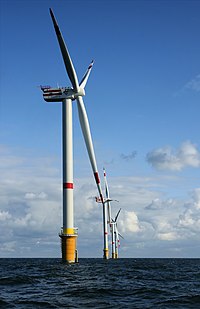
Photo from wikipedia
For cable stayed bridges rain-wind induced vibrations of stay cables are probably the most widespread and controversial phenomenon. Aerodynamic countermeasures have been implemented to tackle such vibrations, but there is… Click to show full abstract
For cable stayed bridges rain-wind induced vibrations of stay cables are probably the most widespread and controversial phenomenon. Aerodynamic countermeasures have been implemented to tackle such vibrations, but there is still not sufficient insight on the inherent mitigation mechanisms. To this goal, a numerical model, based on lubrication theory, was employed in order to study the coupled cable vibration response, aerodynamic forces, and formation and oscillation of rivulets for stay cables equipped with longitudinal ribs. Coupled equations governing the synchronous cable motion and water film evolution were established in order to understand the effects of several key parameters associated with the vibration mitigation performance of the ribs. Such parameters include the cable inclination angle, the wind yaw angle, the number and the height of the ribs. Computed results were successfully validated against experimental data. For the various studied cases, it was apparent that the ribs did not stop the formation of rivulets, but they could affect both their position and oscillation ranges. Through such a control action they could further affect the oscillation range and frequency content of aerodynamic forces, mitigating or not cable vibrations.
Journal Title: Fluid Dynamics Research
Year Published: 2019
Link to full text (if available)
Share on Social Media: Sign Up to like & get
recommendations!